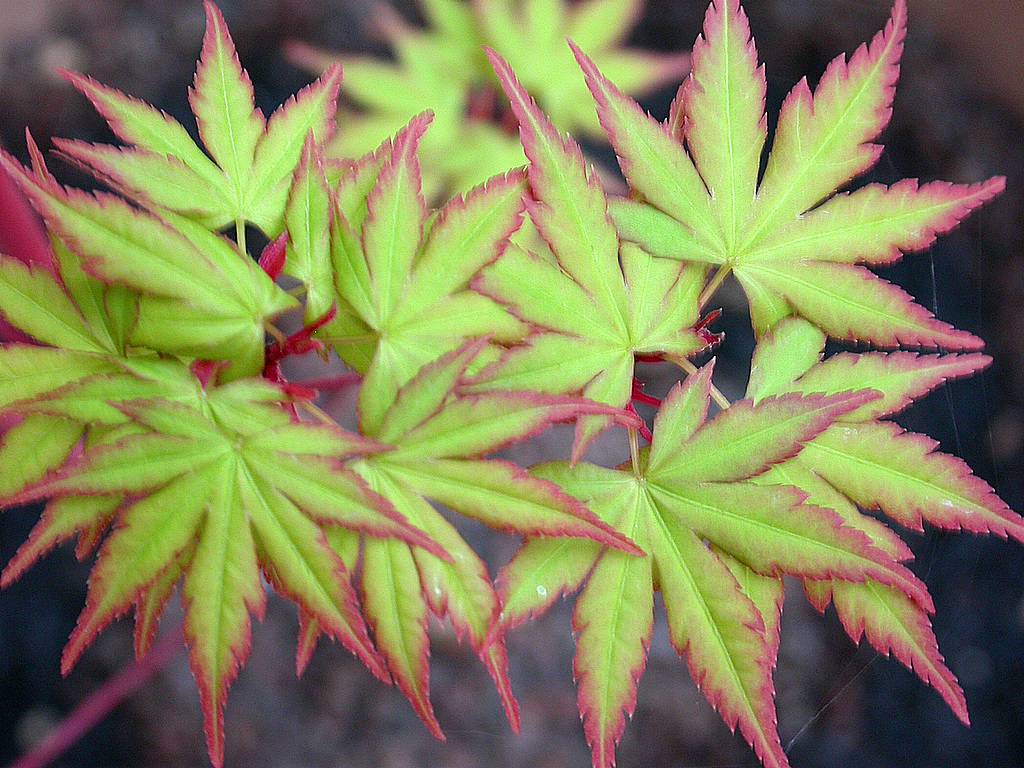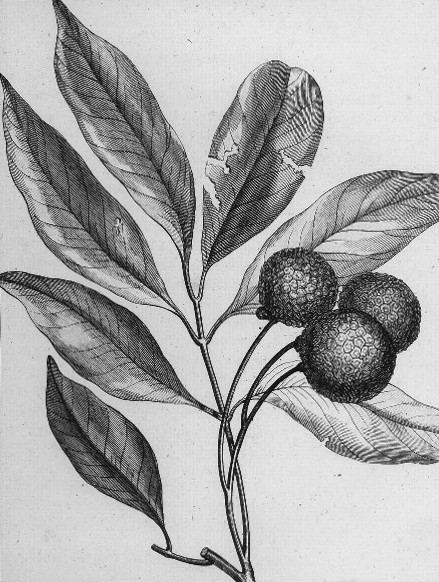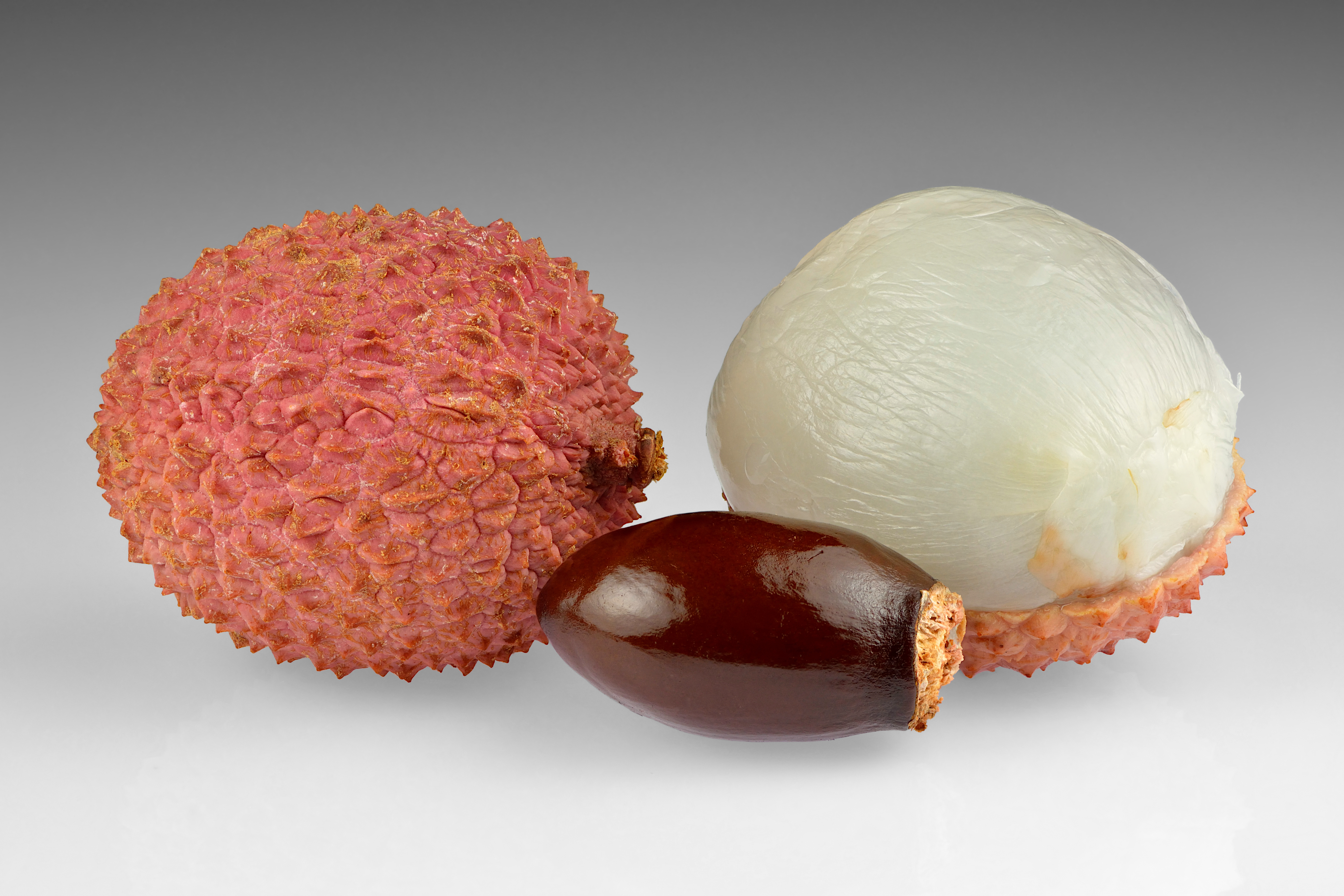|
Sapindaceae
The Sapindaceae are a family (biology), family of flowering plants in the order Sapindales known as the soapberry family. It contains 138 genera and 1,858 accepted species. Examples include Aesculus, horse chestnut, maples, ackee and lychee. The Sapindaceae occur in temperate to tropical regions, many in laurel forest habitat, throughout the world. Many are Glossary of botanical terms#laticiferous, laticiferous, i.e. they contain latex, a milky sap, and many contain mildly Toxicity, toxic saponins with soap-like qualities in either the foliage and/or the seeds, or roots. The largest genera are ''Serjania'', ''Paullinia'', ''Allophylus'' and ''Maple, Acer''. Description Plants of this family have a variety of habits, from trees to herbaceous plants to lianas. The leaves of the tropical genera are usually spirally alternate, while those of the temperate maples (''Maple, Acer), Aesculus'', and a few other genera are opposite. They are most often leaf shape, pinnately compound, but a ... [...More Info...] [...Related Items...] OR: [Wikipedia] [Google] [Baidu] |
Sapindoideae
Sapindoideae is a subfamily of flowering plants in the soapberry family, Sapindaceae. It includes a number of fruit trees, including lychees, longans, rambutans, and quenepas. Tribes and genera This follows the updated classification of Buerki ''et al.'' Tribe Athyaneae Acev.‐Rodr. (2017). Type: ''Athyana'' * '' Athyana'' (1 species; Peru, Bolivia, Argentina) * '' Diatenopteryx'' (2; Southern South America) Tribe Blomieae Buerki & Callm. (2021). Type: ''Blomia'' * '' Blomia'' (1 species; Mexico, Guatemala and Belize) Tribe Bridgesieae Acev.‐Rodr. (2017). Type: ''Bridgesia'' * '' Bridgesia'' (1 species; Chile) Tribe Cupanieae Blume (1857). Type: ''Cupania'' * '' Alectryon'' (25 species; Malesia, Australasia and Micronesia) * '' Arytera'' (c. 28; India, Southeast Asia to Australasia) * '' Castanospora'' (1; Australia) * '' Cnesmocarpon'' (1; Australia, Papua New Guinea) * '' Cupania'' (c. 50; Neotropical) * '' Cupaniopsis'' (60; Malesia to Australasia) * '' Di ... [...More Info...] [...Related Items...] OR: [Wikipedia] [Google] [Baidu] |
Aesculus
The genus ''Aesculus'' ( or ), with notable species including buckeye and horse chestnut, comprises 13–19 species of flowering plants in the family Sapindaceae. They are trees and shrubs native plant, native to the temperateness, temperate Northern Hemisphere, with six species native to North America and seven to 13 species native to Eurasia. Several Hybrid (biology), hybrids occur. ''Aesculus'' exhibits a classical Arcto-Tertiary Geoflora, Arcto-Tertiary distribution. Ungnadia, Mexican buckeye seedpods resemble the ''Aesculus'' seedpods, but belong to a different genus. Carl Linnaeus named the genus ''Aesculus'' after the Roman name for an edible acorn. Common names for these trees include "buckeye" and "horse chestnut", though they are not in the same order as the true chestnuts, ''Castanea'' in the Fagales. Some are also called white chestnut or red chestnut. In Britain, they are sometimes called conker trees because of their link to the game of conkers, played with t ... [...More Info...] [...Related Items...] OR: [Wikipedia] [Google] [Baidu] |
Maple
''Acer'' is a genus of trees and shrubs commonly known as maples. The genus is placed in the soapberry family Sapindaceae.Stevens, P. F. (2001 onwards). Angiosperm Phylogeny Website. Version 9, June 2008 nd more or less continuously updated since http://www.mobot.org/MOBOT/research/APweb/. There are approximately 132 species, most of which are native to Asia, with a number also appearing in Europe, northern Africa, and North America. Only one species, '' Acer laurinum'', extends to the Southern Hemisphere.Gibbs, D. & Chen, Y. (2009The Red List of Maples Botanic Gardens Conservation International (BGCI) The type species of the genus is the sycamore maple ''Acer pseudoplatanus'', one of the most common maple species in Europe.van Gelderen, C. J. & van Gelderen, D. M. (1999). '' Maples for Gardens: A Color Encyclopedia'' Most maples usually have easily identifiable palmate leaves (with a few exceptions, such as '' Acer carpinifolium'', '' Acer laurinum'', and '' Acer negundo'' ... [...More Info...] [...Related Items...] OR: [Wikipedia] [Google] [Baidu] |
Hippocastanoideae
Hippocastanoideae is a subfamily of flowering plants in the soapberry family Sapindaceae. The group was formerly treated as the separate families Aceraceae and Hippocastanaceae. Molecular phylogenetic research by Harrington et al. (2005) has shown that while both the Aceraceae and Hippocastanaceae are monophyletic in themselves, their removal from the Sapindaceae ''sensu lato'' would leave Sapindaceae ''sensu stricto'' as a paraphyletic group, particularly with reference to the genus '' Xanthoceras''. The most widespread genera are '' Acer'' (the maples) and ''Aesculus The genus ''Aesculus'' ( or ), with notable species including buckeye and horse chestnut, comprises 13–19 species of flowering plants in the family Sapindaceae. They are trees and shrubs native plant, native to the temperateness, temperat ...'' (the horse chestnuts and buckeyes). A feature of the subfamily is the palmate compound leaves. [...More Info...] [...Related Items...] OR: [Wikipedia] [Google] [Baidu] |
Xanthoceroideae
''Xanthoceras sorbifolium'', the yellowhorn, shiny leaf yellowhorn, goldenhorn, or Chinese flowering chestnut, is a woody oil tree species in the family Sapindaceae, and the only species in the genus ''Xanthoceras''. It is native to northern China in the provinces of Gansu, Hebei, Henan, Liaoning, Nei Monggol, Ningxia, Shaanxi, and Shandong. It is also cultivated in Russia, having been imported there since the 19th Century. The genus name ''Xanthoceras'' (which translates as "yellow horn") is considered to be the most basal member of the family Sapindaceae.Harrington, M. G., Edwards, K. J., Johnson, S. A., Mark W. Chase, M. W., & Gadek, P. A. (2005). Phylogenetic inference in Sapindaceae ''sensu lato'' using plastid ''mat''K and ''rbc''L DNA sequences. ''Systematic Botany'' 30 (2): 366-382Abstract./ref> The specific epithet ''sorbifolium'' refers to the leaves, which resemble those of the distantly related rowans (''Sorbus''). It was originally spelled ''sorbifolia'', but this is ... [...More Info...] [...Related Items...] OR: [Wikipedia] [Google] [Baidu] |
Dodonaeoideae
Dodonaeoideae is a subfamily of flowering plants in the soapberry family, Sapindaceae. The subfamily includes 24 genera in two tribes, Dodonaeae and Doratoxyleae.Buerki S, Callmander MW, Acevedo-Rodriguez P, Lowry PP 2nd, Munzinger J, Bailey P, Maurin O, Brewer GE, Epitawalage N, Baker WJ, Forest F. An updated infra-familial classification of Sapindaceae based on targeted enrichment data. Am J Bot. 2021 Jul;108(7):1234-1251. doi: 10.1002/ajb2.1693. Epub 2021 Jul 5. Erratum in: Am J Bot. 2022 Aug;109(8):1326-1327. PMID 34219219; PMCID: PMC8361682. A single fossil genus, †'' Alatacarpus'' Greller ''et'' Goudket, is known from the Late Cretaceous (Santonian)-aged Magothy Formation from Long Island, New York. The specimen consists of a fossil fruit similar to that of ''Dodonaea''. Tribe Dodonaeae (Kunth) DC. (1824). Type genus: ''Dodonaea'' * '' Arfeuillea'' Radlkofer (1 Species; Thailand and Laos) * '' Averrhoidium'' Baill. (4 Species; Mexico, Tropical South America) *'' ... [...More Info...] [...Related Items...] OR: [Wikipedia] [Google] [Baidu] |
Litchi Chinensis
Lychee ( , ; ''Litchi chinensis''; ) is a monotypic taxon and the sole member in the genus ''Litchi'' in the Sapindus, soapberry family, Sapindaceae. There are three distinct subspecies of lychee. The most common is the Indochinese lychee found in South China, Malaysia, and northern Vietnam. The other two are the Philippine lychee (locally called ''alupag'' or ''matamata'') found only in the Philippines and the Javanese lychee cultivated in Indonesia and Malaysia. The tree has been introduced throughout Southeast Asia and South Asia. Cultivation in China is documented from the 11th century. China is the main producer of lychees, followed by India, Vietnam, other countries in Southeast Asia, other countries in South Asia, Madagascar, and South Africa. A tall evergreen tree, it bears small fleshy sweet Drupe, fruits. The outside of the fruit is a pink-red, rough-textured soft shell. Lychee seeds contain Methylene cyclopropyl acetic acid, methylene cyclopropyl glycine which has ... [...More Info...] [...Related Items...] OR: [Wikipedia] [Google] [Baidu] |
Sapindales
Sapindales is an order of flowering plants. Well-known members of Sapindales include citrus; maples, horse-chestnuts, lychees and rambutans; mangos and cashews; frankincense and myrrh; mahogany and neem. The APG III system of 2009 includes it in the clade malvids (in rosids, in eudicots) with the following nine families: * Anacardiaceae * Biebersteiniaceae *Burseraceae * Kirkiaceae * Meliaceae * Nitrariaceae (including Peganaceae and Tetradiclidaceae) *Rutaceae *Sapindaceae * Simaroubaceae The APG II system of 2003 allowed the optional segregation of families now included in the Nitrariaceae. In the classification system of Dahlgren the Rutaceae were placed in the order Rutales, in the superorder Rutiflorae (also called Rutanae). The Cronquist system of 1981 used a somewhat different circumscription, including the following families: *Staphyleaceae * Melianthaceae * Bretschneideraceae * Akaniaceae *Sapindaceae * Hippocastanaceae * Aceraceae *Burseraceae * Anaca ... [...More Info...] [...Related Items...] OR: [Wikipedia] [Google] [Baidu] |
Ackee
The ackee (''Blighia sapida''), also known as acki, akee, or ackee apple, is a fruit of the Sapindaceae ( soapberry) family, as are the lychee and the longan. It is native to tropical West Africa. The scientific name honours Captain William Bligh who took the fruit from Jamaica to the Royal Botanic Gardens in Kew, England, in 1793. The English common name is derived from the West African Akan-language name . Although having a long-held reputation as being poisonous with potential fatalities, the fruit arils are renowned as delicious when ripe, prepared properly, and cooked and are a feature of various Caribbean cuisines. Ackee is the national fruit of Jamaica and is considered a delicacy. Botany Ackee is an evergreen tree that grows about 10 metres tall, with a short trunk and a dense crown. The leaves are paripinnately, compound long, with 6–10 elliptical to oblong leathery leaflets. Each leaflet is long and wide. The inflorescences are fragrant, up to ... [...More Info...] [...Related Items...] OR: [Wikipedia] [Google] [Baidu] |
Lychee
Lychee ( , ; ''Litchi chinensis''; ) is a monotypic taxon and the sole member in the genus ''Litchi'' in the soapberry family, Sapindaceae. There are three distinct subspecies of lychee. The most common is the Indochinese lychee found in South China, Malaysia, and northern Vietnam. The other two are the Philippine lychee (locally called ''alupag'' or ''matamata'') found only in the Philippines and the Javanese lychee cultivated in Indonesia and Malaysia. The tree has been introduced throughout Southeast Asia and South Asia. Cultivation in China is documented from the 11th century. China is the main producer of lychees, followed by India, Vietnam, other countries in Southeast Asia, other countries in South Asia, Madagascar, and South Africa. A tall evergreen tree, it bears small fleshy sweet fruits. The outside of the fruit is a pink-red, rough-textured soft shell. Lychee seeds contain methylene cyclopropyl glycine which has caused hypoglycemia associated with outbreaks of e ... [...More Info...] [...Related Items...] OR: [Wikipedia] [Google] [Baidu] |
Allophylus
''Allophylus'' is a genus within the plant family Sapindaceae The Sapindaceae are a family (biology), family of flowering plants in the order Sapindales known as the soapberry family. It contains 138 genera and 1,858 accepted species. Examples include Aesculus, horse chestnut, maples, ackee and lychee. The .... It includes 211 species with a pantropical distribution. Selected species * '' Allophylus agbala'' – Central Africa (DRC) * '' Allophylus aldabricus'' – Indian Ocean (Seychelles) * '' Allophylus bullatus'' – Central Africa * '' Allophylus chartaceus'' – South/Southeast Asia * '' Allophylus chirindensis'' – Southern Africa * '' Allophylus cobbe'' – Pantropical * '' Allophylus decipiens'' – Southern Africa * '' Allophylus dodsonii'' – South America (Ecuador) * '' Allophylus edulis'' – South America * '' Allophylus natalensis'' – Southern Africa * '' Allophylus pachyphyllus'' – Caribbean (Jamaica) * '' Allophylus rapensis'' – Oceania ... [...More Info...] [...Related Items...] OR: [Wikipedia] [Google] [Baidu] |







